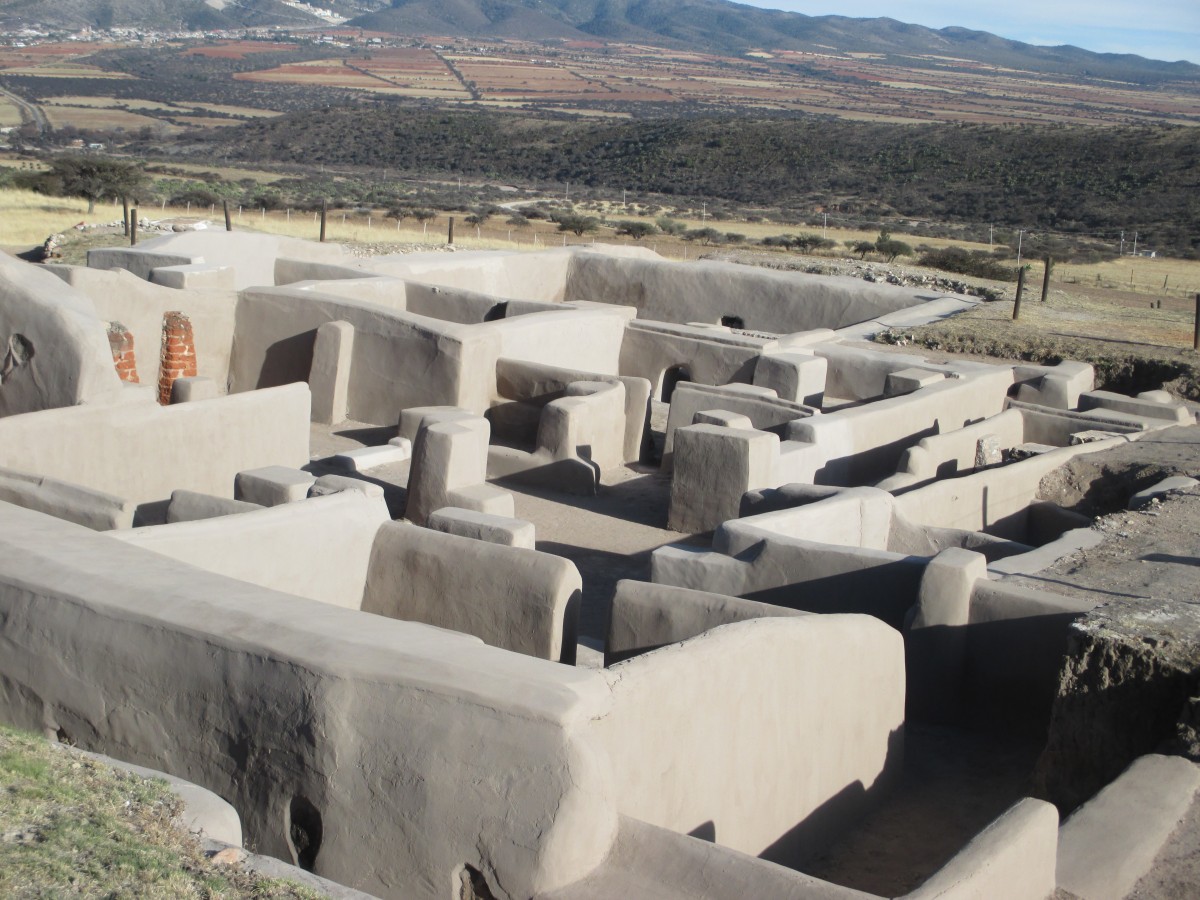Alta Vista was a ceremonial center integrated into an architectural complex site, comprised of civic-ceremonial structures which were built at different times; over time there were various periods of construction and refurbishment. Its geographical location and orientation were determined by astronomical priests of Teotihuacan origin, who sought, in the north of Central America, the place where the sun began its return to the south: the Tropic of Cancer. The site is currently found at 4.2 km to the south of this line, whose objectives were to identify the beginning and the end of the farming cycle and to organize the calendar of pilgrimages and religious festivals.
Through observation of the landscape, the ancient settlers of Alta Vista managed to trace a precise triangulation between the peak of the Picacho Pelón mountain, in the Chalchihuites mountain range, the Chapín mountain and the Pedregoso mountain. Two petroglyphs were discovered in the Chapín mountain sculpted in the form of a circle cross, similar to those found in Teotihuacán and its surroundings. From one of these petroglyphs, it is possible to observe the first rays of the summer solstice sun (June 21), after which the sun emerges from behind the peak of the Picacho Pelón mountain. Whilst in the winter solstice (December 21), this same phenomenon is observed from the Pedregoso mountain. Whoever is in the Maze-Observatory of the Alta Vista site during the Spring and Winter equinox sunrises (on March 21 and September 23) may once again observe the sunrise over the peak of Picacho Pelón.







